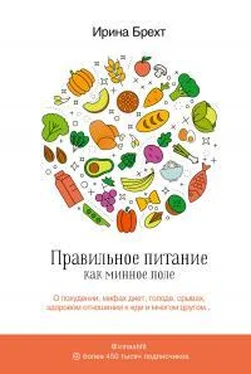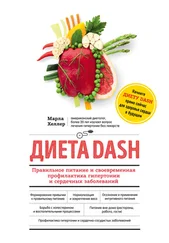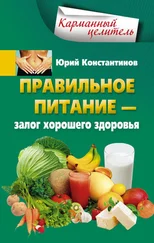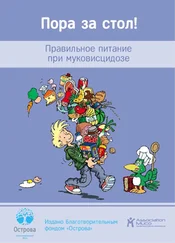27. Deurenberg P. et al. Body mass index as a measure of body fatness: age- and sex-specific prediction formulas. Br J Nutr. (1991) 65(2): 105–114.
28. World Health Organization. BMI classification.
29. Dietary Reference Intakes for Energy, Carbohydrate, Fiber, Fat, Fatty Acids, Cholesterol, Protein and Amino Acids. Food and Nutrition Board. Institute of Medicine (2005), p.224
30. Hamdy O et al. Metabolic obesity: the paradox between visceral and subcutaneous fat. Curr Diabetes Rev. (2006) 2(4):367—73.
31. Dalton M. et al. Waist circumference, waist-hip ratio and body mass index and their correlation with cardiovascular disease risk factors in Australian adults. J Intern Med. 2003 Dec;254(6):555—63.
32. World Health Organization. Waist Circumference and Waist-Hip Ratio. Report of a WHO Expert Consultation. GENEVA, 8—11 DECEMBER 2008.
33. Kevin D. Hall. Did the Food Environment Cause the Obesity Epidemic? Obesity. Volume26, Issue1. January 2018. Pages 11–13. doi.org/10.1002/oby.22073
34. https://www.healio.com/family-medicine/nutrition-and-fitness/news/online/%7Bd6c0faf5—12b8—4e50-acbe-37900ca75bba%7D/realistic-shift-in-diet-could-save-the-us-up-to-37-billion-annually
35. https://www.gov.uk/government/news/new-measures-announced-to-halve-childhood-obesity-by-2030
36. http://www.rospotrebnadzor.ru/about/info/news/news_details.php?ELEMENT_ID=10140
37. Kuk JL et al. Individuals with obesity but no other metabolic risk factors are not at significantly elevated all-cause mortality risk in men and women. Clinical Obesity (2018) doi.org/10.1111/cob.12263
38. Janssen I, Katzmarzyk PT, Ross R. Body mass index, waist circumference, and health risk: evidence in support of current National Institutes of Health guidelines. Arch Intern Med. 2002;162(18):2074—9.
Часть 1. Глава 3.
1. Foster GD et al. What is a reasonable weight loss? Patients’ expectations and evaluations of obesity treatment outcomes. J Consult Clin Psychol. (1997) 65(1): 79–85.
2. Dutton GR Weight loss goals of patients in a health maintenance organization. Eat Behav. (2010)(2): 74–78.
3. Linde JA et al. Are unrealistic weight loss goals associated with outcomes for overweight women? Obes Res. (2004) 12(3): 569–576.
4. Dalle Grave R. et al. Weight loss expectations in obese patients seeking treatment at medical centers. Obes Res. 2004 Dec; 12(12):2005—12.
5. McDonald L. The Woman’s Book: A Guide to Nutrition, Fat Loss and Muscle Gain (2017), ISBN: 978—0-9671456—9–3, ch. 17, p.169
6. Runcie J., Hilditch TE. Energy provision, tissue utilization, and weight loss in prolonged starvation. Br Med J. 1974 May 18; 2(5915): 352–356.
7. Sherman WM, Plyley MJ, Sharp RL, et al. Muscle glycogen-storage and its relationship with water. Int J Sports Med. 1982; 3(1): 22–24.
8. Kreitzman SN et al. Glycogen storage: illusions of easy weight loss, excessive weight regain, and distortions in estimates of body composition. Am J Clin Nutr (1992) 56: 292S—293S.
9. Thomas DM et al. Can a weight loss of one pound a week be achieved with a 3500-kcal deficit? Commentary on a commonly accepted rule.Int J Obes (Lond). 2013 Dec; 37(12): 1611–1613.
10. Seymour S. Alpert. A limit on the energy transfer rate from the human fat store in hypophagia. Journal of Theoretical Biology (2005) doi:10.1016/j.jtbi.2004.08.029.
11. Heymsfield SB, Harp JB, Reitman ML, Beetsch JW, Schoeller DA, Erondu N, et al. Why do obese patients not lose more weight when treated with low-calorie diets? A mechanistic perspective. The American journal of clinical nutrition. 2007; 85: 346–354.
12. Calbet JA et al. A time-efficient reduction of fat mass in 4 days with exercise and caloric restriction. Scand J Med Sci Sports. 2015 Apr;25(2):223—33. doi: 10.1111/sms.12194
13. Astrup A., Meinert Larsen T., Harper A. Atkins and other low-carbohydrate diets: hoax or an effective tool for weight loss. Lancet. (2004)
14. Dhurandhar EJ et al. Predicting adult weight change in the real world: a systematic review and meta-analysis accounting for compensatory changes in energy intake or expenditure. Int J Obes (Lond). 2014 Oct 17.
15. Mcdonald L. The Woman’s Book: A Guide to Nutrition, Fat Loss and Muscle Gain (2017), ISBN: 978—0-9671456—9–3, ch. 25, p.287—288
16. Veverbrants E, Arky RA. Effects of fasting and refeeding. I. Studies on sodium, potassium and water excretion on a constant electrolyte and fluid intake. J Clin Endocrinol Metab 1969; 29:55.
17. Saudek CD, Boulter PR, Knopp RH, Arky RA. Sodium retention accompanying insulin treatment of diabetes mellitus. Diabetes 1974; 23:240.
18. DeFronzo RA, Cooke CR, Andres R, et al. The effect of insulin on renal handling of sodium, potassium, calcium, and phosphate in man. J Clin Invest 1975; 55:845.
19. American Dietetic Association Adult Weight Management Evidence-Based Nutrition Practice Guideline. www.adaevidencelibrary.com/topic.cfm?cat=2798&library=EBG
Часть 1. Глава 4.
1. Coelho M, Oliveira T, Fernandes R. Biochemistry of adipose tissue: an endocrine organ. Archives of Medical Science: AMS. 2013;9(2):191–200. doi:10.5114/aoms.2013.33181.
2. Duncan RE, Ahmadian M, Jaworski K, Sarkadi-Nagy E, Sul HS. Regulation of Lipolysis in Adipocytes. Annual review of nutrition (2007)27:79—101. doi:10.1146/annurev.nutr.27.061406.093734.
3. Arner P. Adrenergic receptor function in fat cells. Am J Clin Nutr. 1992 Jan;55(1 Suppl):228S-236S. doi: 10.1093/ajcn/55.1.228s.
4. Max Lafontan, Michel Berlan. Fat Cell 02-Adrenoceptors: The Regulation of Fat CellFunction and Lipolysis. Endocrine Reviews, Volume 16, Issue 6, 1 December 1995, Pages 716–738, doi:10.1210/edrv-16—6-716
5. Frayn KN and F Karpe. Regulation of human subcutaneous adipose tissue blood flow. Int J Obes (Lond). (2014) 38(8):1019–1026.
6. Holm C. Molecular mechanisms regulating hormone-sensitive lipase and lipolysis. Biochem Soc Trans. 2003 Dec; 31(Pt 6): 1120–1124.
7. Diraison F, Beylot M. Role of human liver lipogenesis and reesterification in triglycerides secretion and in FFA reesterification. Am J Physiol. 1998 Feb;274(2 Pt 1):E321—7.
8. Frayn KN and F Karpe. Regulation of human subcutaneous adipose tissue blood flow. Int J Obes (Lond). (2014)38(8):1019—26.
9. Van der Vusse GJ. Albumin as fatty acid transporter. Drug Metab Pharmacokinet. 2009; 24(4): 300–307.
10. Michael D. Jensen. Fatty acid oxidation in human skeletal muscle. J Clin Invest. 2002 Dec 1; 110(11): 1607–1609.
11. Meerman R, Brown A. When somebody loses weight, where does the fat go? BMJ 2014; 349:g7257
12. Sahlin K. Muscle fatigue and lactic acid accumulation. Acta Physiol Scand Suppl. 1986; 556: 83–91.
13. Robergs, R. A., Ghiasvand, F., & Parker, D. Biochemistry of exercise-induced metabolic acidosis. Am J Physiol Regul Integr Comp Physiol. 2004 Sep; 287(3): R502—516.
14. D.E. Vance and J.E. Vance (Eds.) Biochemistry of Lipids, Lipoproteins and Membranes (4th Edn.) Adipose tissue and lipid metabolism. Chapter 10
15. Raclot T, Oudart H. Net release of individual fatty acids from white adipose tissue during lipolysis in vitro: evidence for selective fatty acid re-uptake. Biochem J. 2000 May 15;348 Pt 1:129—36.
Часть 1. Глава 5.
1. Donnelly JE, Jakicic J, Gunderson S. Diet and body composition. Effect of very low calorie diets and exercise. Sports Med. 1991 Oct; 12(4): 237–249.
2. Torgerson JS, Agren L, Sjо#strо#m L. Effects on body weight of strict or liberal adherence to an initial period of VLCD treatment. A randomised, one-year clinical trial of obese subjects. Int J Obes Relat Metab Disord. 1999 Feb; 23(2): 190–197.
3. Dulloo AG, Jacquet J, Girardier L. Poststarvation hyperphagia and body fat overshooting in humans: a role for feedback signals from lean and fat tissues. Am J Clin Nutr. 1997 Mar; 65(3): 717–723.
Читать дальше
Конец ознакомительного отрывка
Купить книгу












